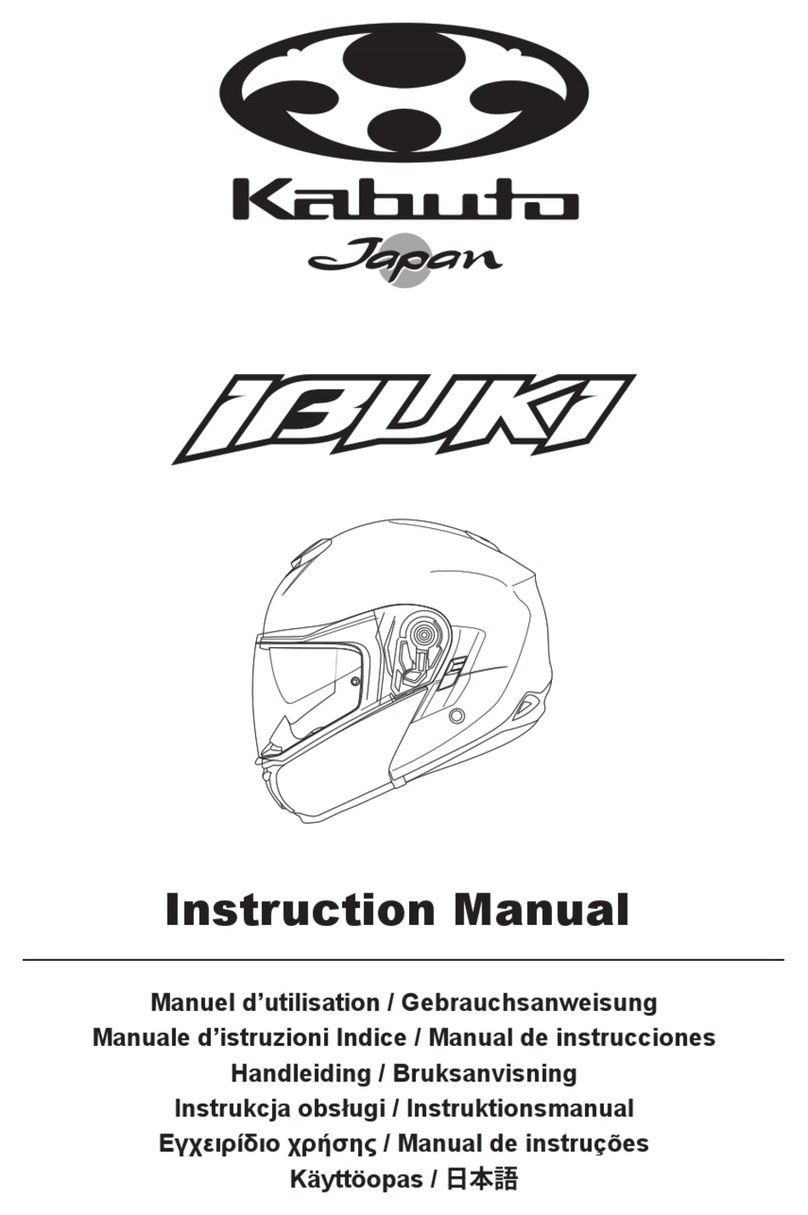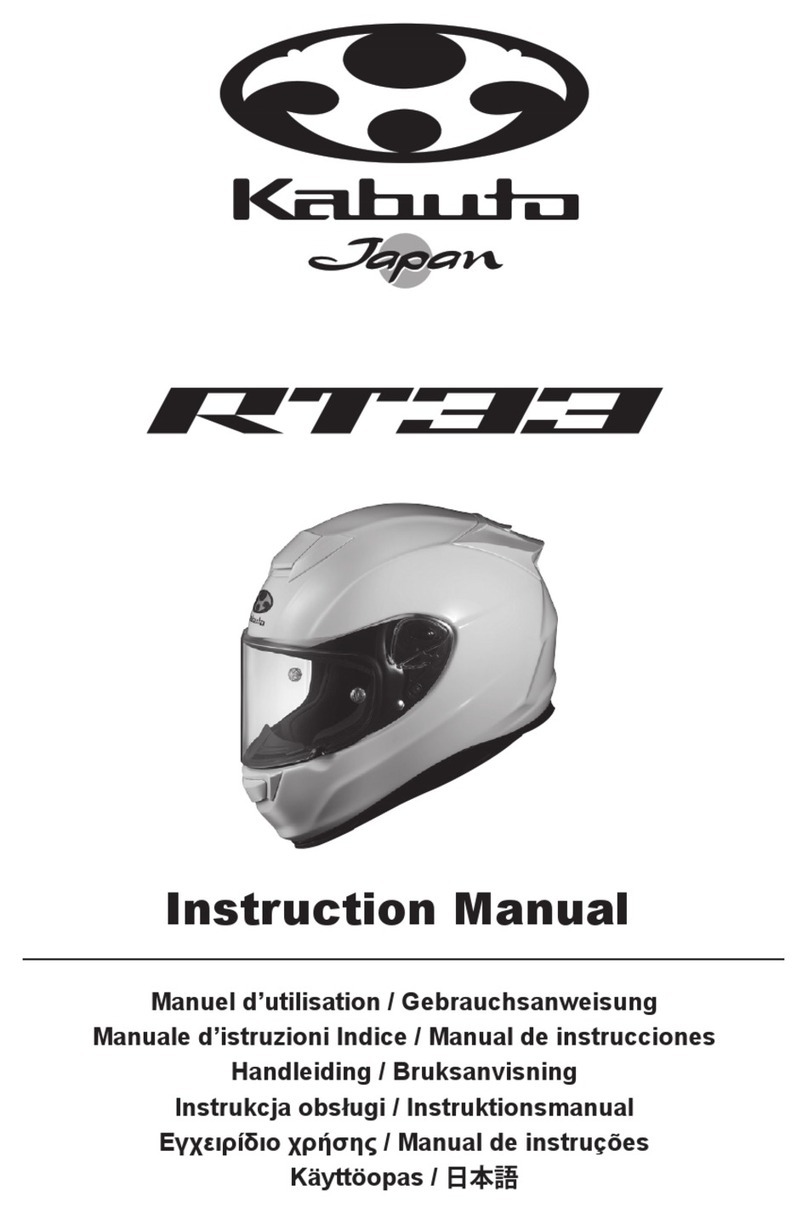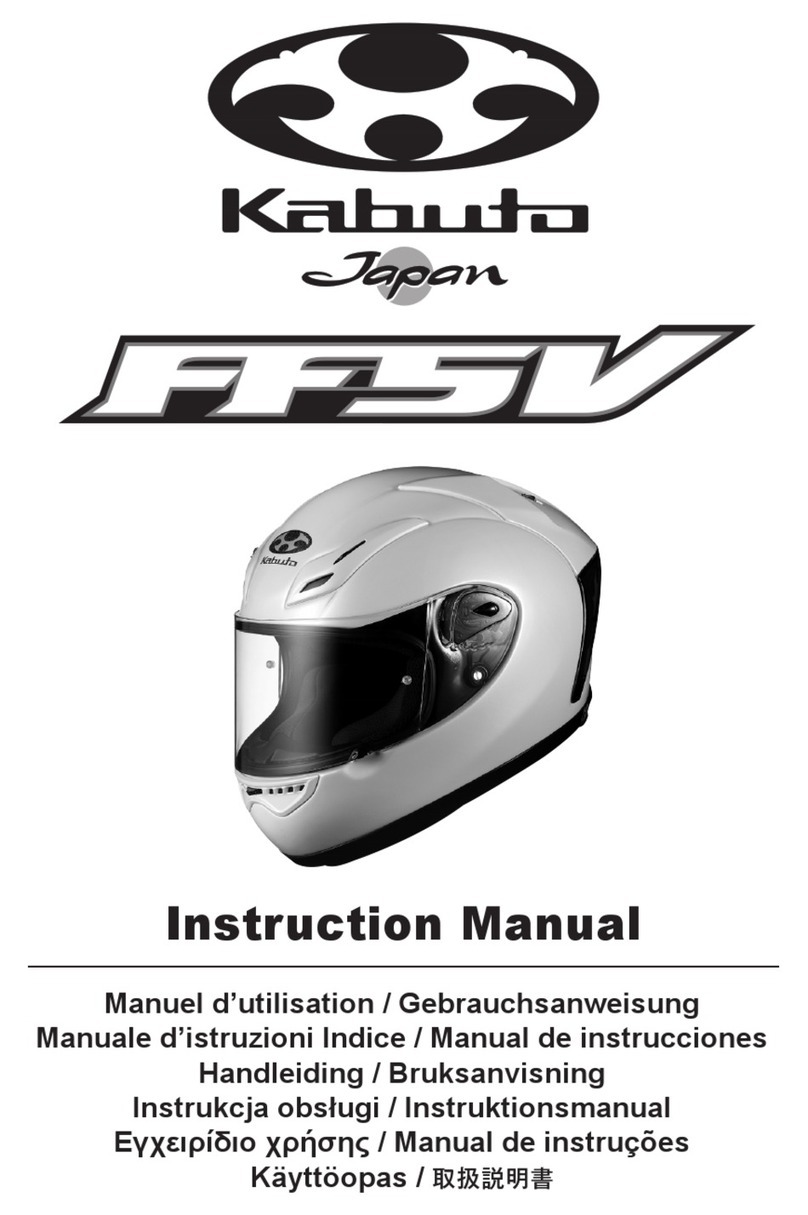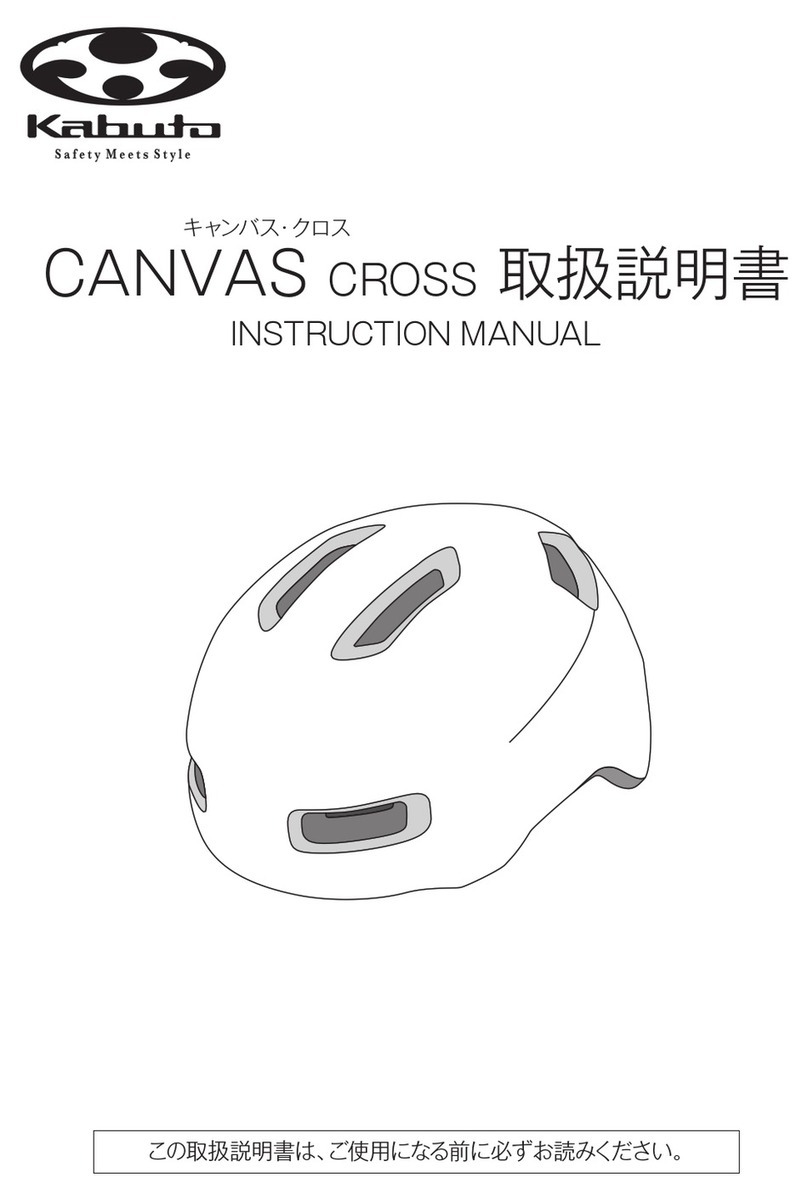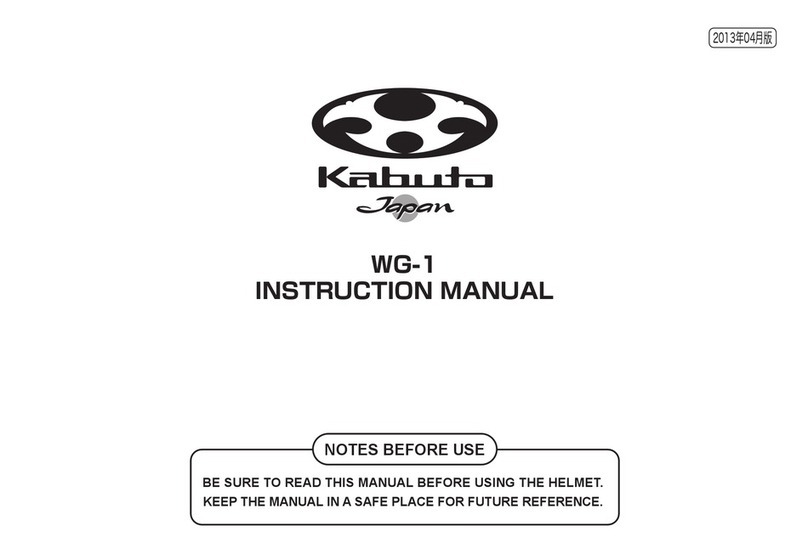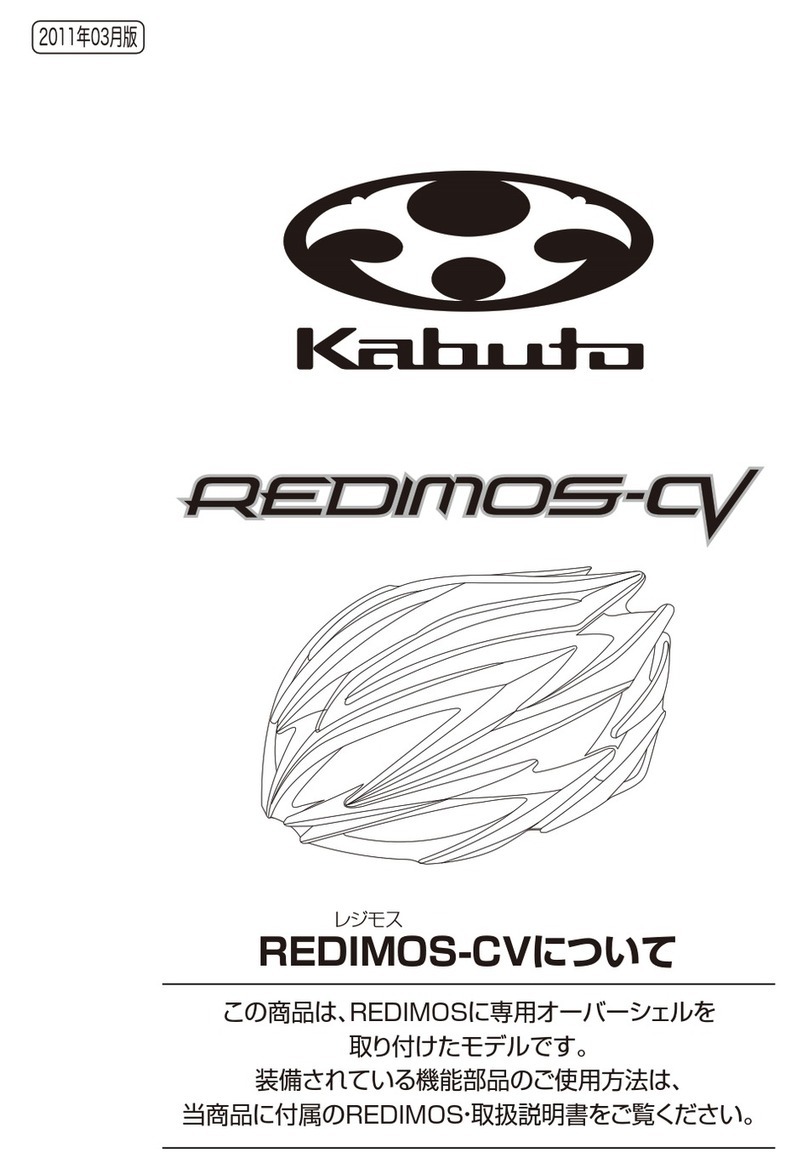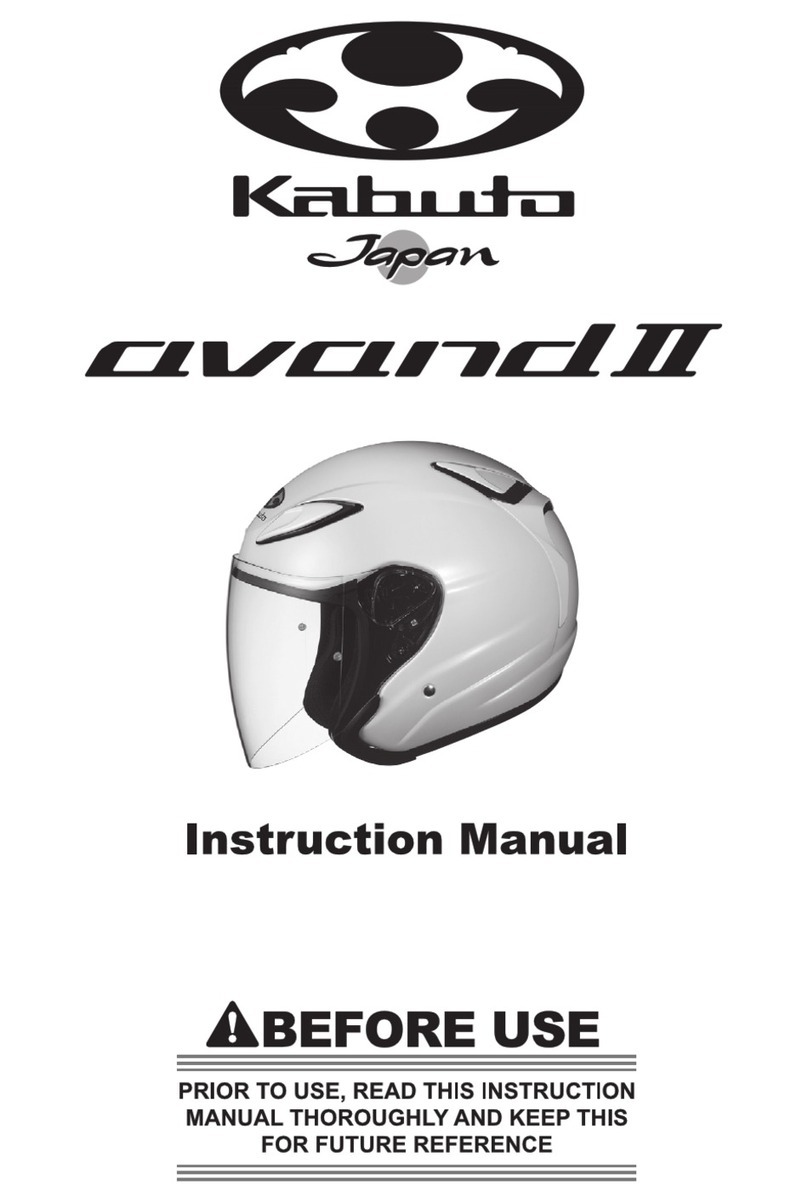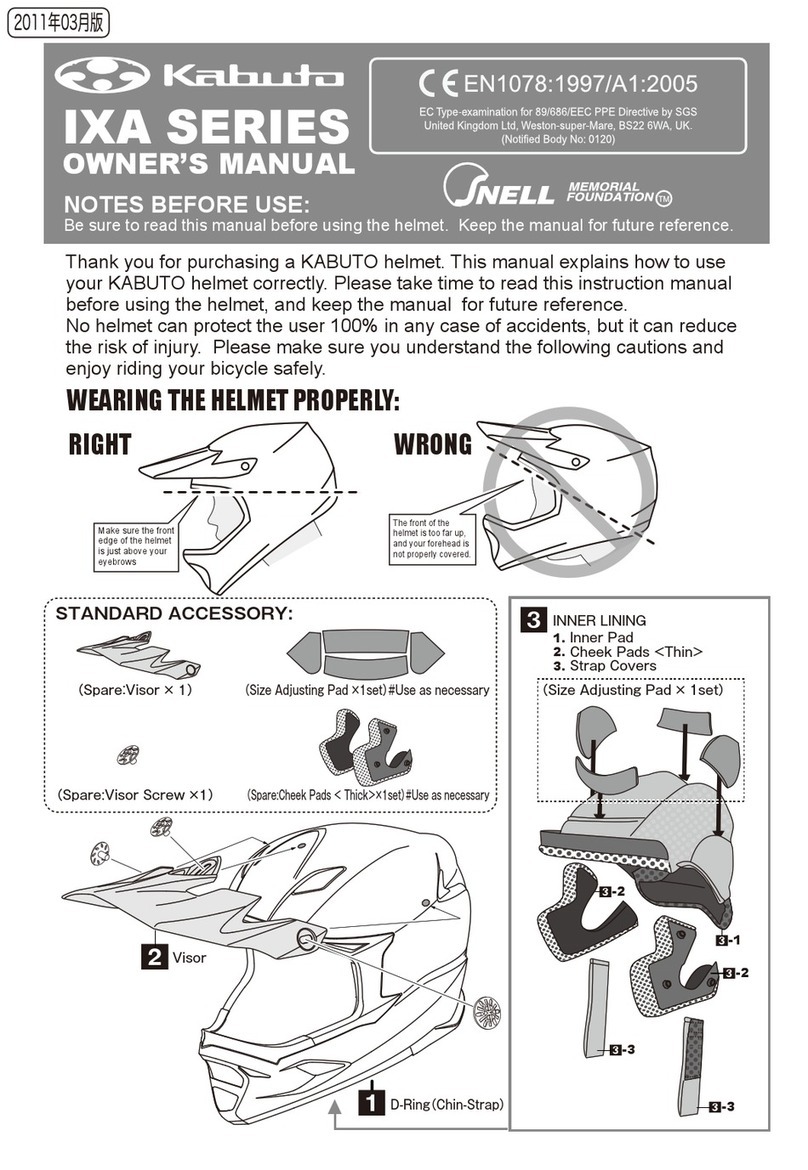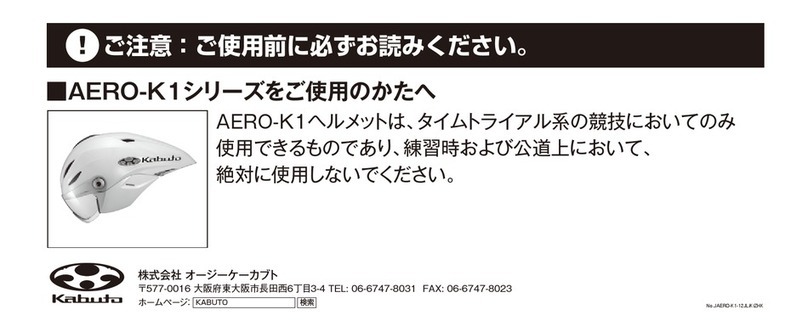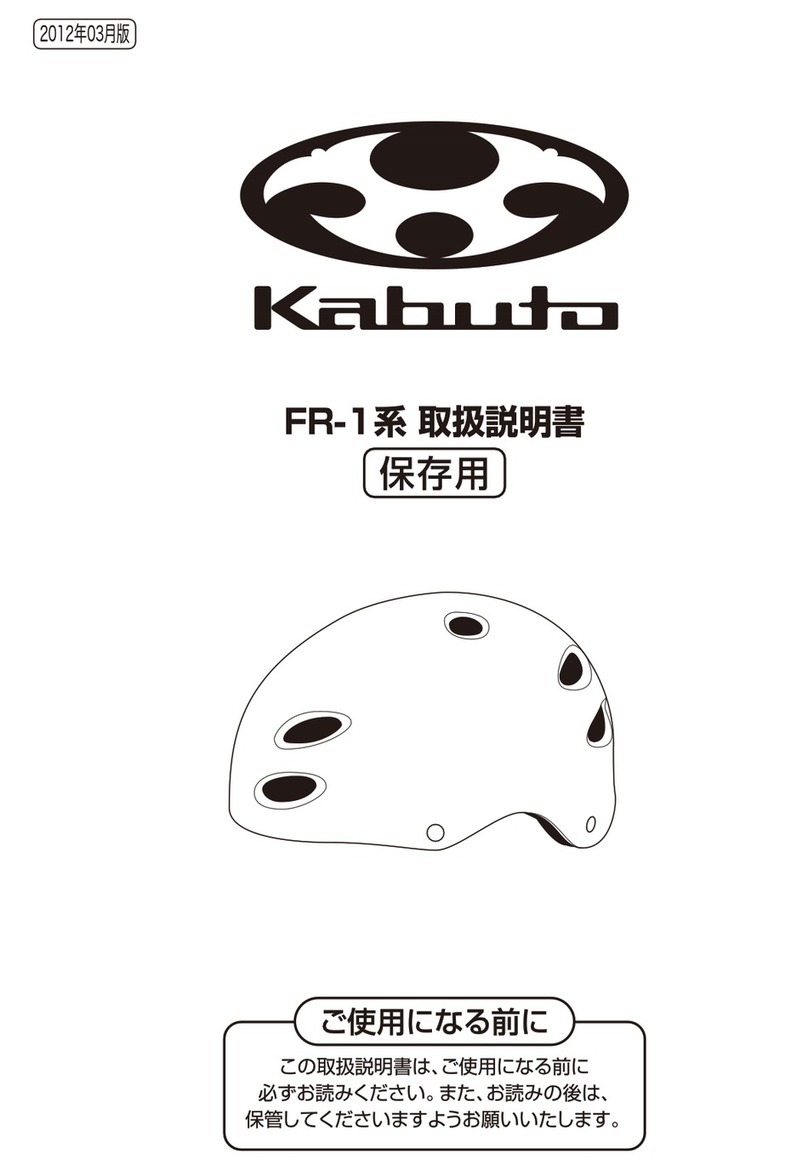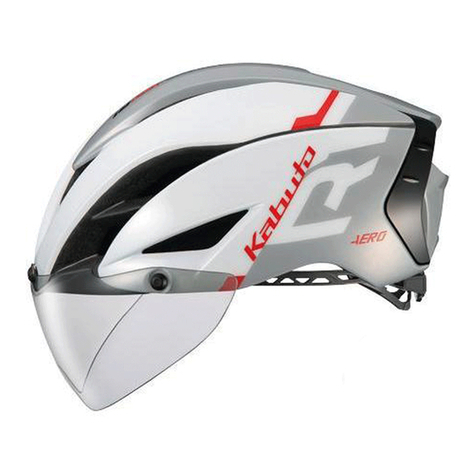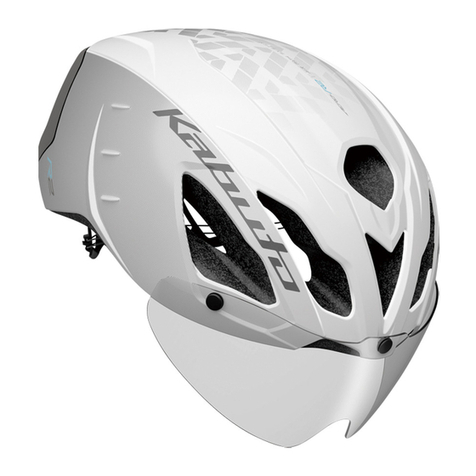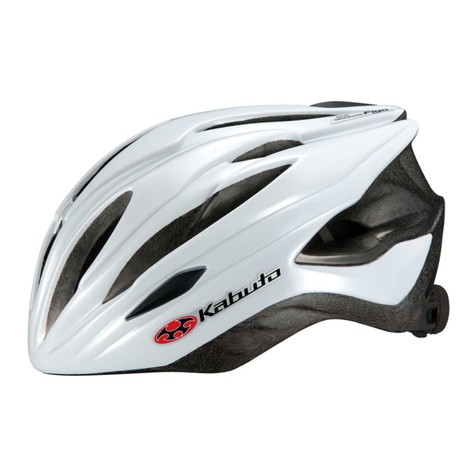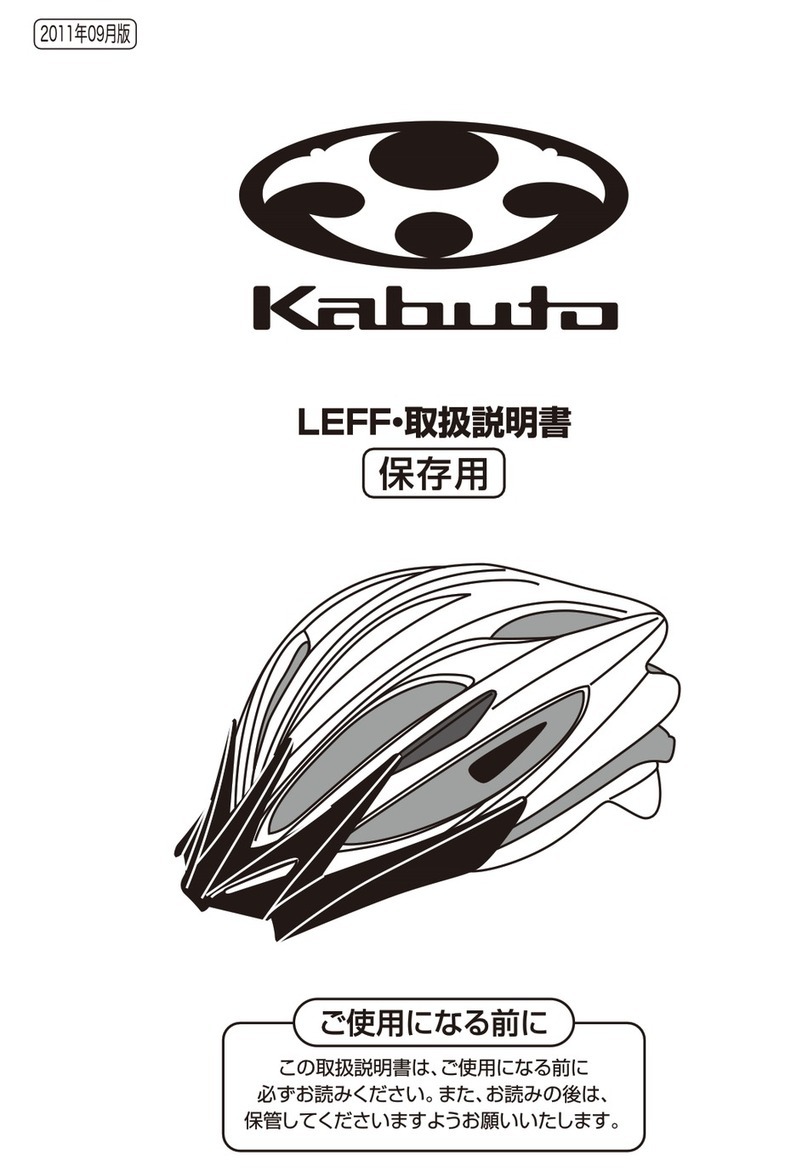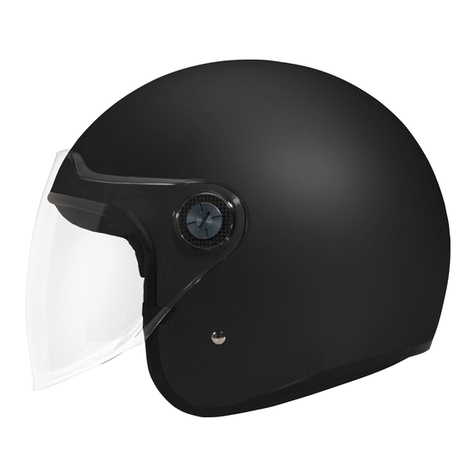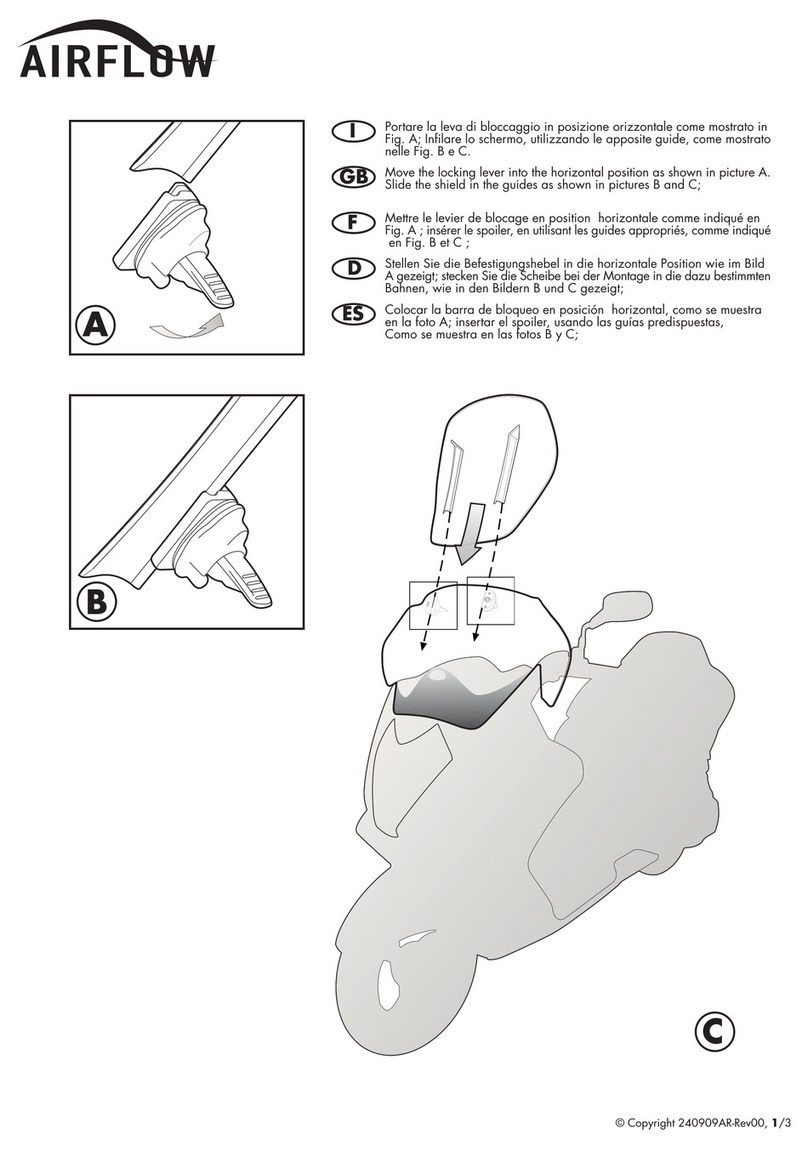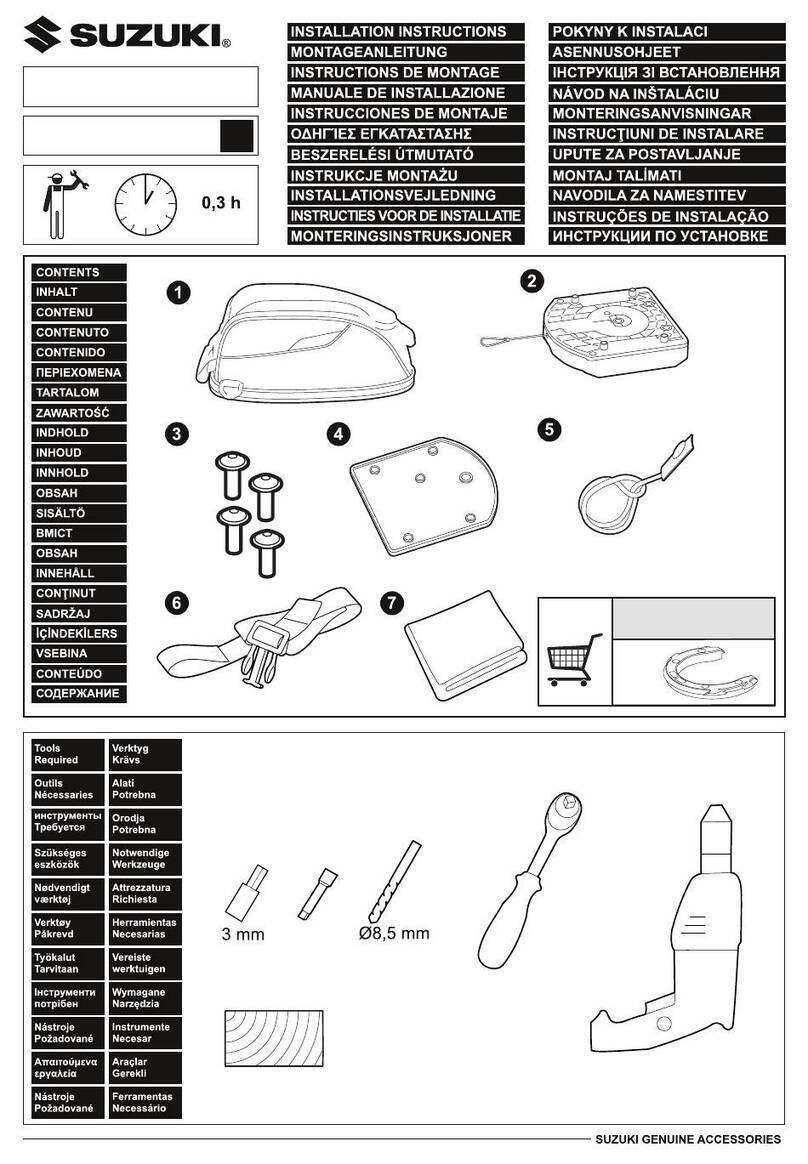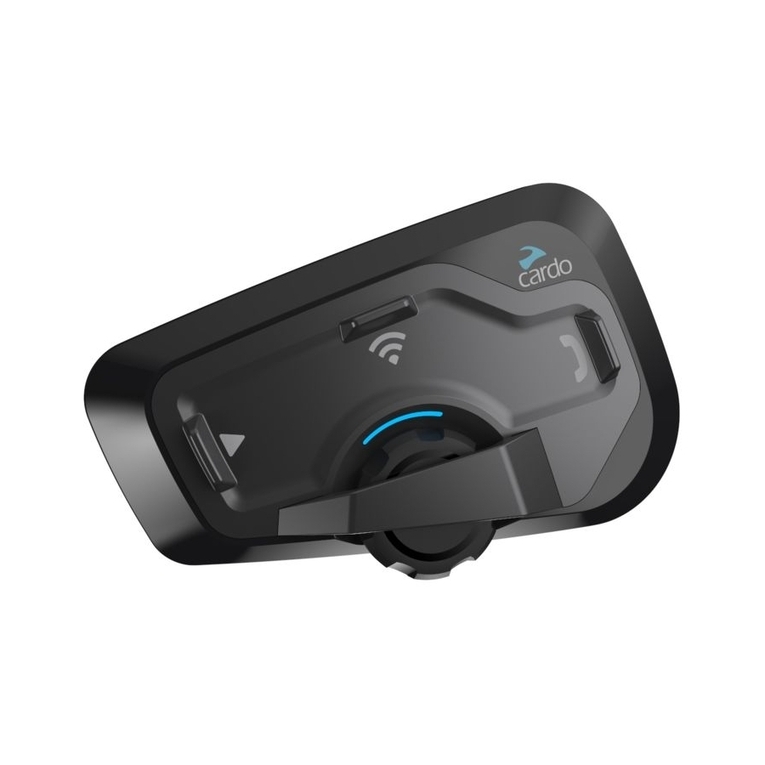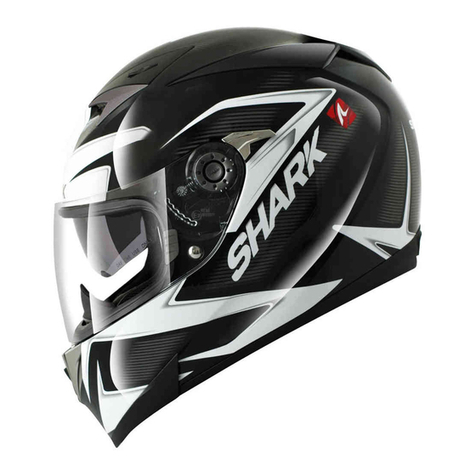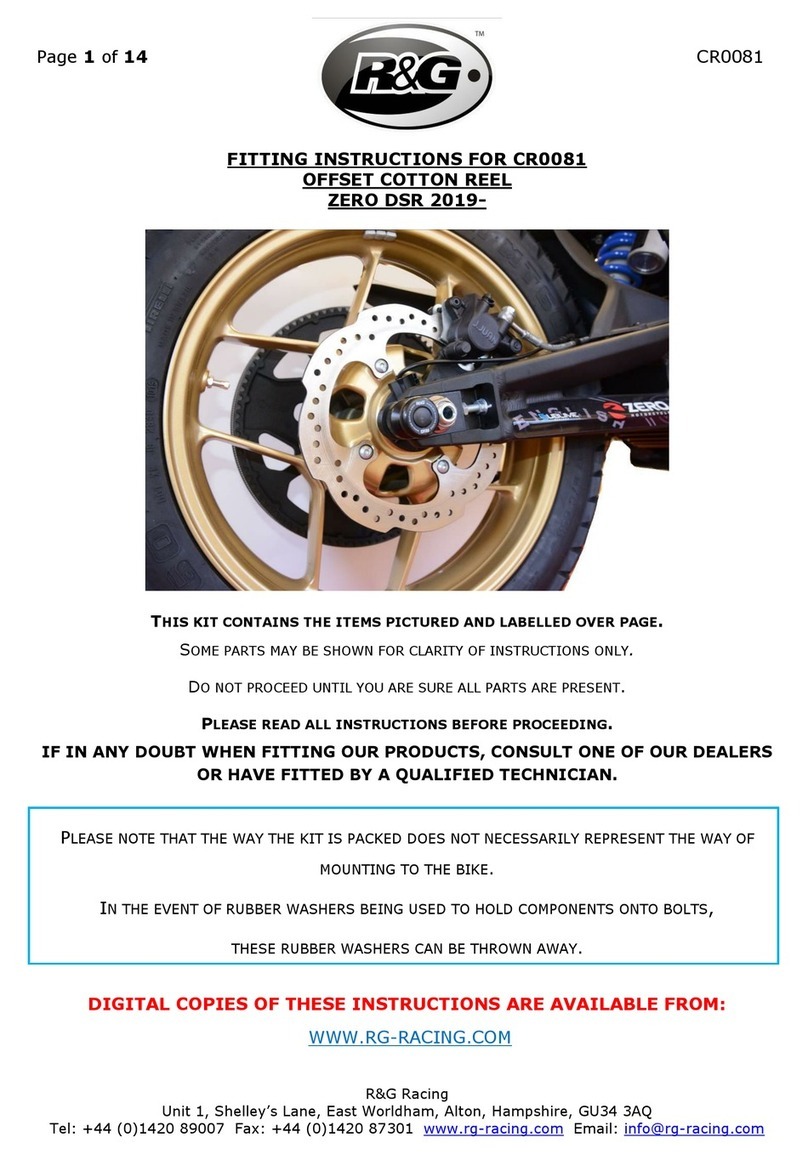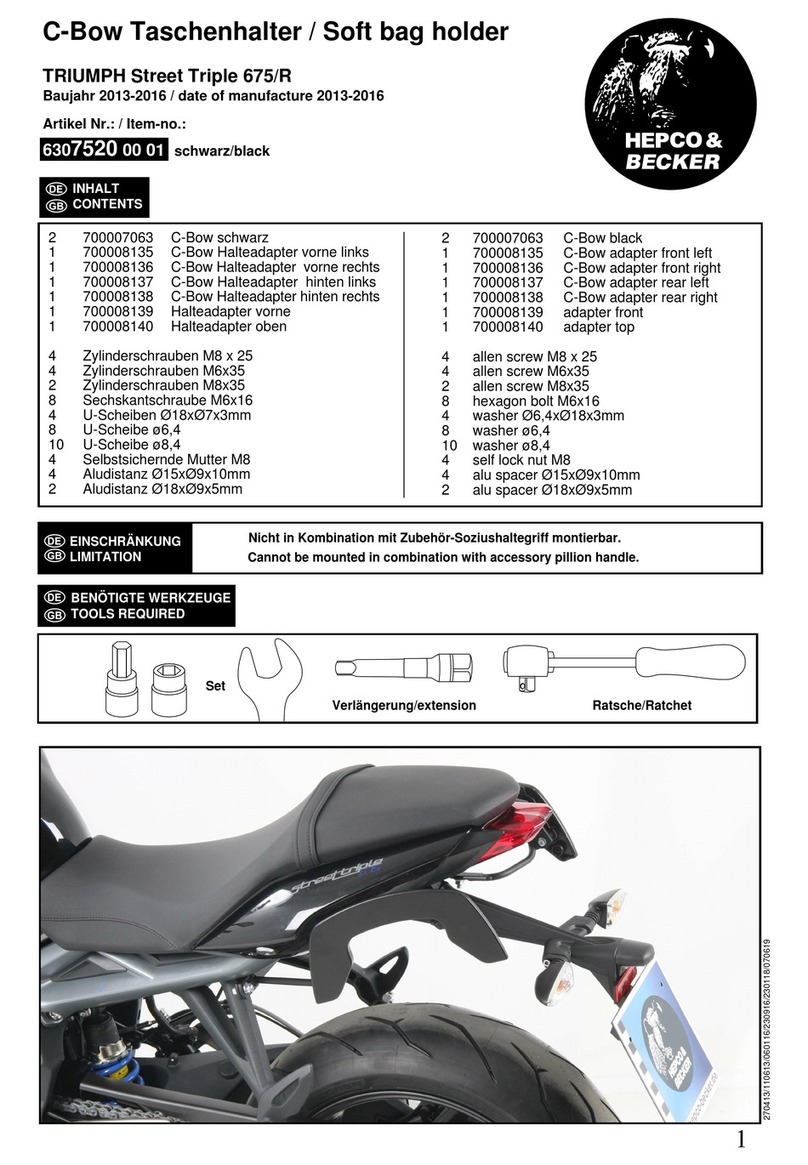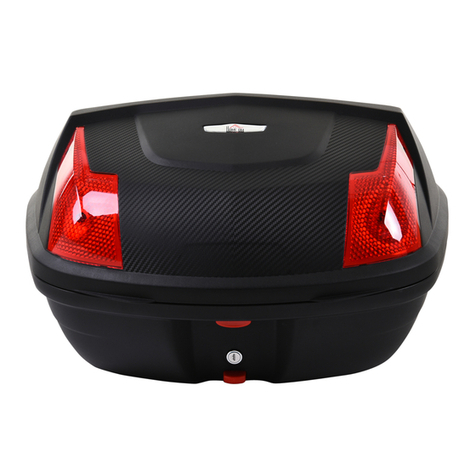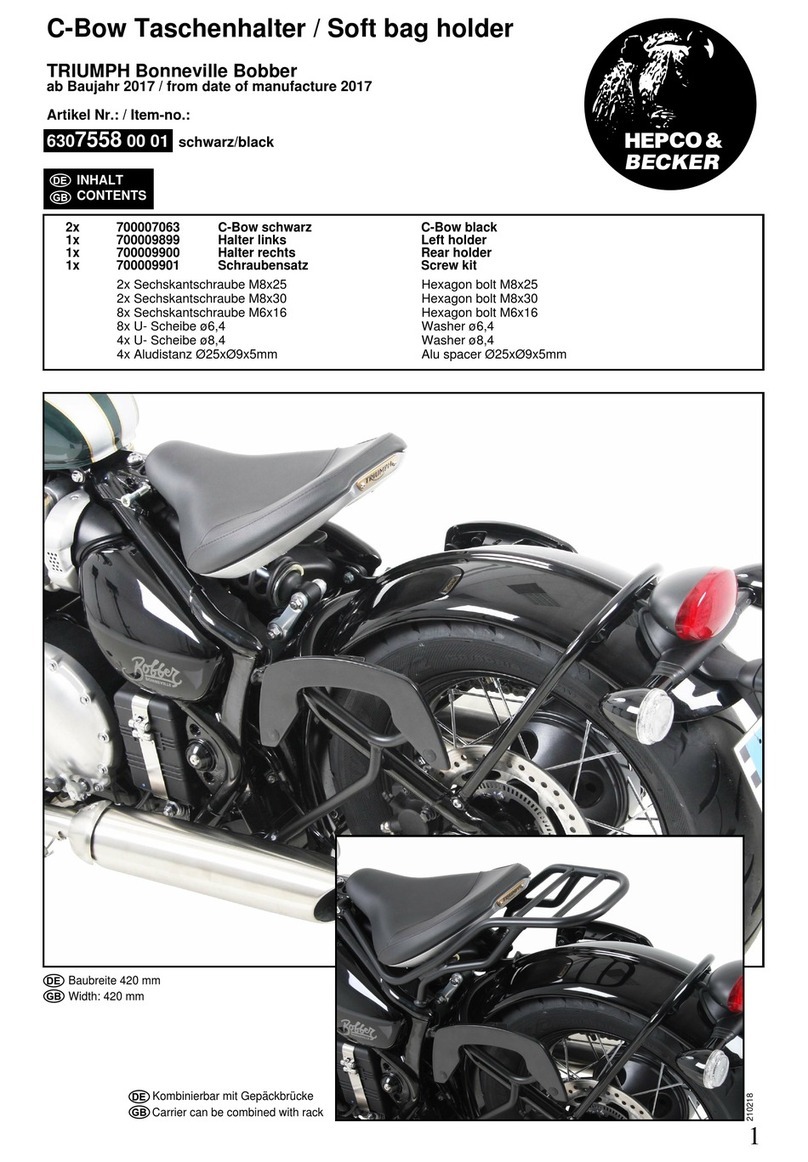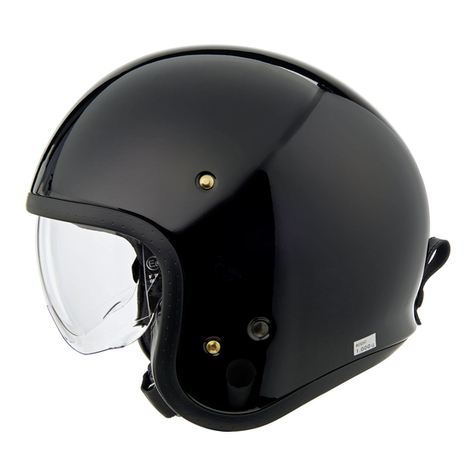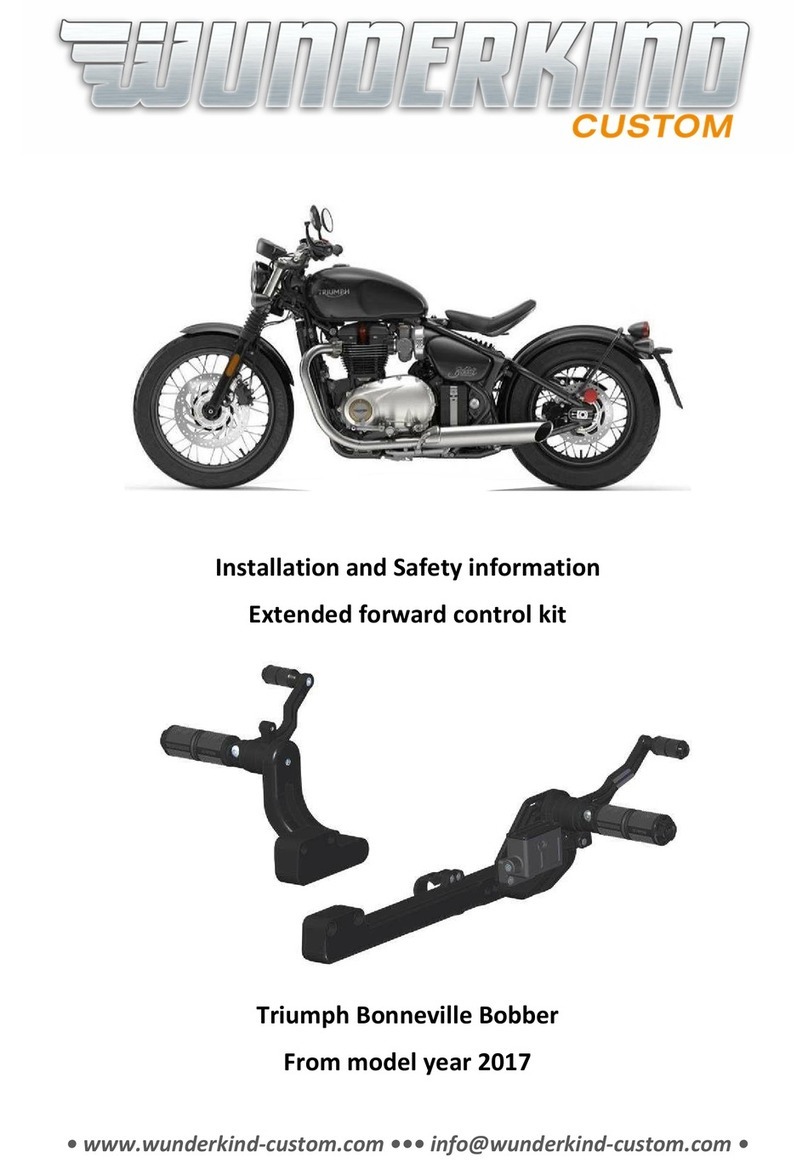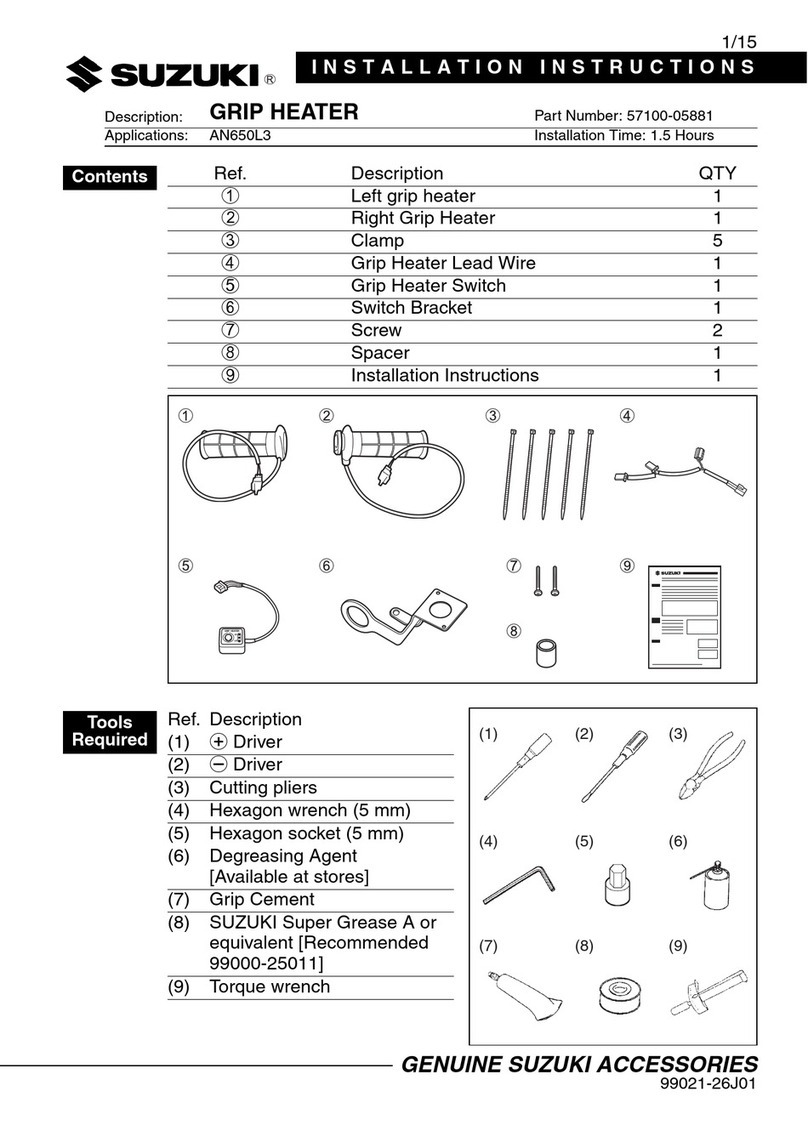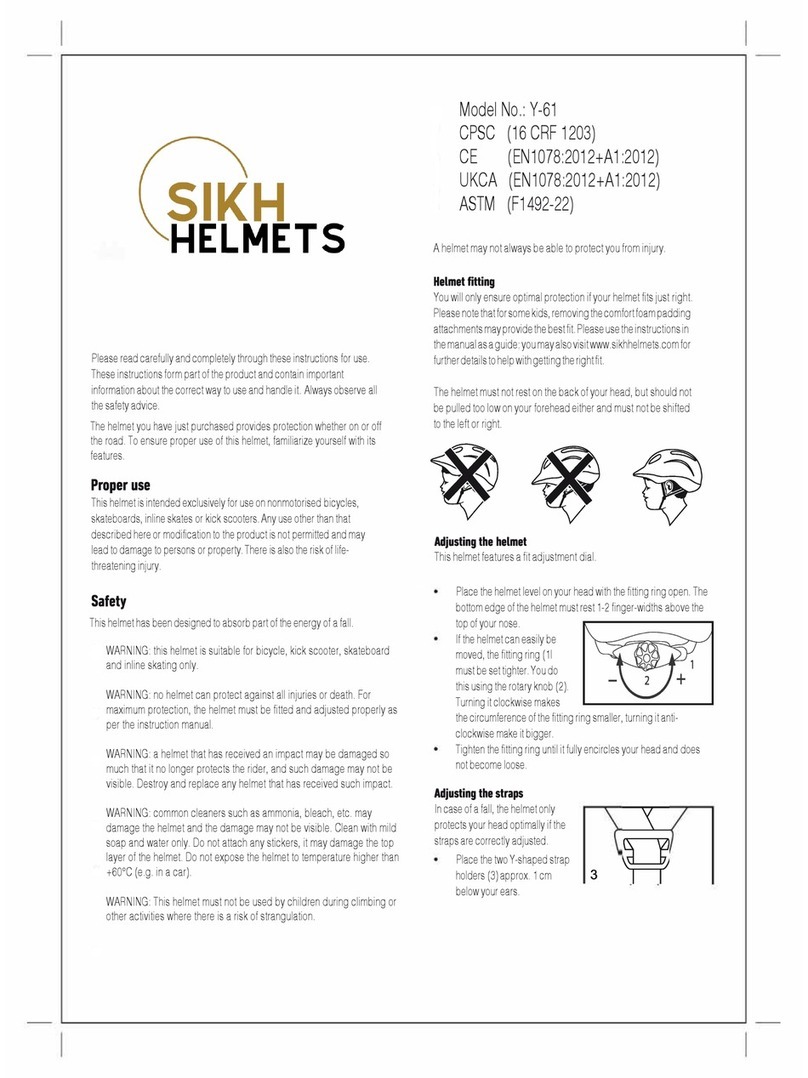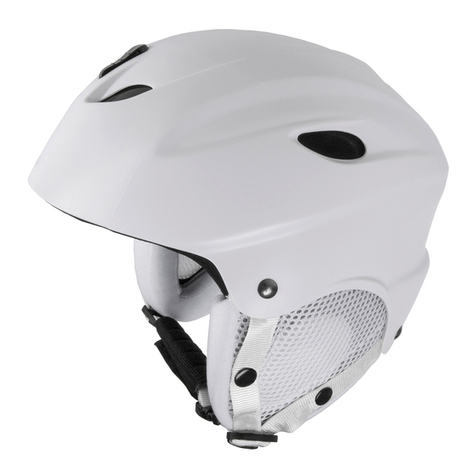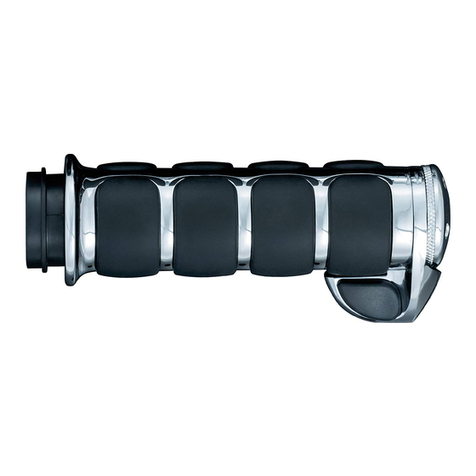
3 4
NOTES BEFORE USE
Thank you very much for purchasing the Kabuto helmet.
This Instruction Manual describes proper handling, various functions, and
removal and replacement of each part of this helmet. Please read this
Instruction Manual thoroughly prior to use.
After reading this, keep the Manual for future reference.
The helmet is just an element of protection, intended to minimize the risk in
the event of an accident. It cannot ensure complete safety. Use this helmet
properly with understanding this point very well.
Please understand and follow the instructions and information in this
Instruction Manual to enjoy your pleasant and safe motorcycle ride.
It is very dangerous to wear too large size of the helmet. This may wobble while riding on a
motorcycle. If you wear too small size helmet, it tightens up and hurts your head. Thus, it is
important to select the helmet size that fits you.
The helmet is designed to be retained by straps under the chin. In order to assure proper protection,
the helmet should fit your head. When worn, adjust it to rest properly on the head, securely fasten
the chinstraps to ensure safety. The chinstraps prevent the helmet from coming off in most cases.
In order to fully maintain the performance of this helmet, do not attempt to take it apart or
change it in any manner such as making holes in it, or cutting it (or any of its parts).
Liners are essential for the intended performance of the helmet. This helmet has been
designed to absorb the impact energy when components such as shell and liners are partially
destroyed by an impact. Even if visually no damage is apparent, it could be seriously
damaged by a small impact. Regardless of the degree of damage, the helmet that underwent
an impact or was abused even only once should not be used anymore. Always handle the
helmet with care and make sure that no one sits on it or drops it.
Never use the helmet once impacted
To clean the helmet, use common ph-neutral detergent diluted with clear water. The cloth
should not be soaking wet, then wipe it gently with dry cloth. Finally wipe away the detergent
solution by using a cloth rinsed in clear water, and leave the helmet to completely dry, but not
in direct sunlight. With regard to helmets with removable interiors, carefully read the
instruction manual for that model before attempting to remove the interiors and carry out
cleaning according to the explanation provided.
To clean the helmet do not use saline water or hot water (above 50ºC).
Never remodel the helmet
Select the proper size!
The storage of the helmet
Shield care and cleaning
Notes for use of full-face helmet
After using the helmet, stow it away in the helmet bag and store on a level place such as a
shelf; the helmet may be damaged if it rolls around or falls down. Do not leave the helmet in
direct heat above 50ºC e.g. next to a heater or under direct sunlight in a car.
Cautions for shield
If the shield is marked “Day Time Use Only”, visibility is limited to daylight conditions and it is
not suitable for use at night. Tinted lenses are not suitable for use at night.
A shield and goggles with scratches lowers the visibility and this is very dangerous. Such
shields should never be used at night and should be replaced.
Contact with petroleum products and other solvents may impair the optical properties and
weaken the strength of the shield. Never try to open and close or to remove the shield while
riding.
After using your helmet, with a wet soft cloth, lightly wipe off any grime (e.g. dead insects,
dirt, sand, dust, etc.) on the shield and then fully wipe it clean using a dry soft cloth. When
the shield gets wet (e.g. rainwater), it should always be wiped with a soft cloth after use.
When cleaning the shield, never use any petroleum-based solvents or detergents containing
abrasives.
Contact with petroleum products and other solvents may impair the optical properties and
reduce the mechanical strength.
To clean the shield, apply some common ph-neutral detergent diluted with clear water using a
soft cloth and wipe gently. Finally, wipe it dry with a lint-free soft cloth. To clean the shield, do
not use saline water or hot water (above 50ºC).
When you wear a full-face helmet, the temperature in the helmet is maintained nearly constant
during riding but the surroundings are constantly changing since you are moving at a high
speed. For this reason, in case of sudden rain, immediately after entering a tunnel or in a
place with a large difference in height such as a mountain path cause difference in
temperature between inside and outside of the helmet. As a result, the shied of the helmet
may be fogged suddenly. In case such a risk is expected, please use caution with adjusting
the shield or slowing down your speed in advance. Never open and close the shield or adjust
the ventilation shutter while riding since it is very dangerous. Thus, operate them before riding.
Handle your helmet with care
Do not toss your helmet over a floor or sit on it. The helmet absorbs an impact every time it is
handled roughly and its impact-absorbing capacity will be decreased. Handle your helmet with
care so as to assure its full intended function in the event of an accident.
Do not use your helmet for any purpose other than to use for protecting your head while riding.
Fasten the chinstraps before riding
Helmet care and cleaning
Any paint, glue, adhesive stickers, etc. (or the use of detergents and solvents other than those
prescribed) may not only reduce the original protective performance of the helmet considerably,
but may also cause damage to the helmet that cannot be detected by the naked eye.
Do not paint or apply solvent
